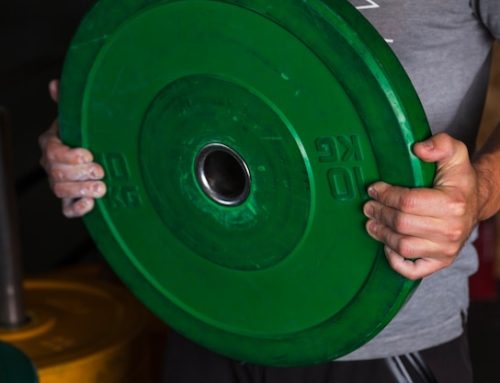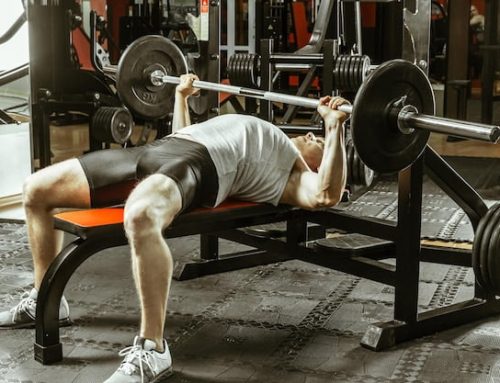What is High-Rep Weightlifting
High-rep weightlifting involves lifting lighter weights for more repetitions. It is typically used in bodybuilding and is one of the most popular methods for building muscle size and strength. The goal of high-rep weightlifting is to perform as many repetitions as possible with a given weight, without sacrificing form or technique. This method places less stress on the body, but increases the time under tension for the muscles being worked.
Can Heavier Weights Build More Muscle?
It is a common belief that lifting heavier weights will result in more muscle growth. However, research has indicated that the amount of weight lifted is not the primary factor in building muscle. Instead, it is the time under tension that a muscle experiences during an exercise that ultimately leads to muscle growth. This means that lifting lighter weights for more repetitions can be just as effective as lifting heavier weights for fewer reps.
Light vs heavy weightlifting
Here’s a table comparing light weightlifting and heavy weightlifting:
| Aspect | Light Weightlifting | Heavy Weightlifting |
|---|---|---|
| Definition | Involves using lighter weights with higher repetitions | Involves using heavier weights with lower repetitions |
| Muscle Endurance | Improves muscular endurance and stamina | Less emphasis on muscular endurance |
| Strength Development | Provides moderate strength gains | Promotes significant strength and power gains |
| Muscle Size | May contribute to slight muscle growth | Can result in substantial muscle hypertrophy |
| Fatigue | Less fatiguing, as the weights used are lighter | Can be more physically demanding and result in greater fatigue |
| Focus on Technique | Allows for greater focus on exercise technique and form | Technique is still important but may be prioritized less |
| Cardiovascular Benefits | Provides some cardiovascular benefits due to higher repetitions | Less emphasis on cardiovascular benefits |
| Injury Risk | Lower risk of injury due to lighter weights and controlled movements | Higher risk of injury due to heavier loads and increased stress |
| Time Efficiency | Workouts may be shorter due to higher repetition ranges | Longer rest periods and heavier weights may require more time |
| Sport-Specific Applications | May be more applicable for endurance-based sports or activities | May be more applicable for strength-based sports or activities |
Benefits of High-Rep Weightlifting
High-repetition weightlifting, also known as high-rep weightlifting, involves performing exercises with a relatively lighter weight and a higher number of repetitions. While it may not be suitable for everyone or every fitness goal, high-rep weightlifting offers several benefits. Here are some advantages:
- Muscular Endurance: High-rep weightlifting primarily targets muscular endurance. Performing exercises with higher repetitions helps to build stamina and improve the ability of your muscles to sustain contractions over an extended period.
- Metabolic Conditioning: High-rep weightlifting can contribute to metabolic conditioning by increasing heart rate and promoting calorie burn. The combination of resistance training and cardiovascular effort can enhance overall fitness and assist with weight management.
- Toning and Definition: By engaging in high-rep weightlifting, you can stimulate muscle fibers and promote muscle toning and definition. The sustained effort and repetition can help shape and sculpt the muscles, contributing to a lean and defined appearance.
- Joint Health and Injury Prevention: Lighter weights used in high-rep weightlifting put less stress on the joints compared to heavy weights. This can be beneficial for individuals with joint concerns or those recovering from injuries, allowing them to engage in resistance training with reduced risk of aggravating existing issues.
- Cardiovascular Benefits: The continuous effort and higher repetitions involved in high-rep weightlifting can elevate heart rate and contribute to cardiovascular fitness. This can enhance cardiovascular endurance, improve oxygen utilization, and increase overall cardiovascular health.
It’s important to note that high-rep weightlifting may not be the most effective approach for maximizing strength gains or muscle hypertrophy (significant muscle growth). It is more suitable for individuals aiming to improve endurance, muscular tone, and overall fitness. The optimal training approach depends on your specific goals and preferences.
How to Incorporate High-Rep Weightlifting into Your Workouts
Incorporating high-rep weightlifting into your workouts can be done in a variety of ways. One of the simplest ways is to perform more sets and reps with lighter weights. For example, if you typically perform 3 sets of 8 reps with a heavy weight, try doing 4 sets of 12 reps with a lighter weight. This will increase the time under tension for your muscles, while still providing a challenging workout.
Another way to incorporate high-rep weightlifting is to use drop sets. Drop sets involve starting with a heavier weight and performing as many reps as possible, then quickly dropping the weight and continuing to perform reps with a lighter weight. This technique allows you to perform a high number of repetitions with a lighter weight, while still challenging your muscles to the max.
Conclusion
In conclusion, high-rep weightlifting can be an effective way to build muscle, without putting excessive stress on your body. By lifting lighter weights for more repetitions, you can increase your muscle endurance, reduce your risk of injury, and ultimately promote muscle growth. So if you’re looking to switch up your workout routine and try something new, give high-rep weightlifting a try and see how it works for you!
| Weight | Repetitions |
|---|---|
| 50 lbs | 10 reps |
| 40 lbs | 12 reps |
| 30 lbs | 15 reps |






